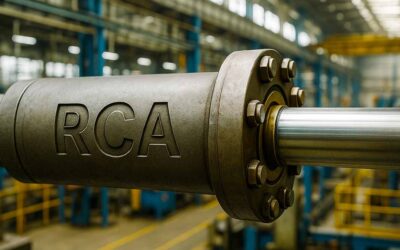Maintenance optimization is a method to improve maintenance strategies to help ensure that machinery operates reliably. The objective is to keep costs, downtime, and risks as low as possible.
This process involves striking the ideal balance between reactive maintenance—addressing issues as they arise—and proactive maintenance, which prevents failures through scheduled inspections, servicing, or updates.
Let’s explore this concept with analogies and detailed technical insights to make it more relatable.
Maintenance Optimization Analogy: The Car and Its Maintenance
Imagine you own a car. You have three main ways to handle its upkeep:
Reactive Maintenance (Fix it when it breaks):
- You wait until the car breaks down. For example, you only replace the tires when one blows out on the highway.
- Pros: Minimal upfront cost since you’re not doing unnecessary work.
- Cons: There is a high risk of unexpected breakdowns. This leads to inconvenience and higher repair costs—possibly safety hazards.
Preventive Maintenance (Regular checkups):
- You follow the manufacturer’s schedule for oil changes, tire rotations, and brake inspections.
- Pros: Reduces the chance of breakdowns by catching problems early.
- Cons: Replacing parts with life left in them can feel inefficient.
Predictive Maintenance (Smart diagnostics):
- Predictive maintenance is similar to installing sensors in your car so that you can monitor the condition of critical engine parts. This way, you act only when the data indicates a potential problem.
- Pros: Maximizes the lifespan of components and minimizes downtime.
- Cons: Requires investment in technology and skilled personnel to interpret the data.
Maintenance optimization is like being the car owner who wants to decide the best approach to handle upkeep, considering the car’s importance, repair costs, and how much risk you’re willing to tolerate.
Core Components of Maintenance Optimization
Asset Criticality Analysis:
- Identify which assets are most important to the operation. For example, a factory’s production line might depend on a conveyor belt, while a backup generator might only be used sometimes.
- Analogy: Think of a ship’s engine versus a backup lifeboat motor. You’ll prioritize maintaining the engine since the whole voyage depends on it.
Failure Mode and Effects Analysis (FMEA):
- Study how things fail, why they fail, and the consequences.
- Analogy: Your smartphone battery dies versus the screen cracking. The battery dying stops the phone from working entirely. The screen cracking is an inconvenience.
Condition Monitoring:
- Use sensors or inspections to track equipment health in real-time or over time. This helps in predictive maintenance.
- Analogy: It’s similar to checking your blood pressure to catch a health issue before it escalates.
Cost-Benefit Analysis:
- Evaluate the costs of various maintenance strategies against the potential savings from reduced downtime or extended equipment life.
- Analogy: You might spend $50 to fix a minor car issue now to avoid a $500 repair later.
Reliability-Centered Maintenance (RCM):
- Focus on ensuring each piece of equipment can perform its intended function effectively. RCM asks, “What maintenance actions are necessary to keep this equipment running reliably?”
- Analogy: RCM is like deciding which part of your car (engine, brakes, or GPS) needs the most attention to create a smooth and safe ride.
Technical Approaches in Maintenance Optimization
Risk Assessment:
- Use probabilities to assess the likelihood of failures and their consequences.
- Example: Risk = Probability of Failure × Impact of Failure.
Optimization Algorithms:
- Use techniques like linear programming or machine learning to analyze large amounts of data and suggest the best maintenance schedules.
- Example: Scheduling software might determine that servicing a piece of equipment every 45 days minimizes downtime.
Life Cycle Cost Analysis (LCCA):
- Evaluate costs over an asset’s life, including purchase, operation, maintenance, and disposal.










